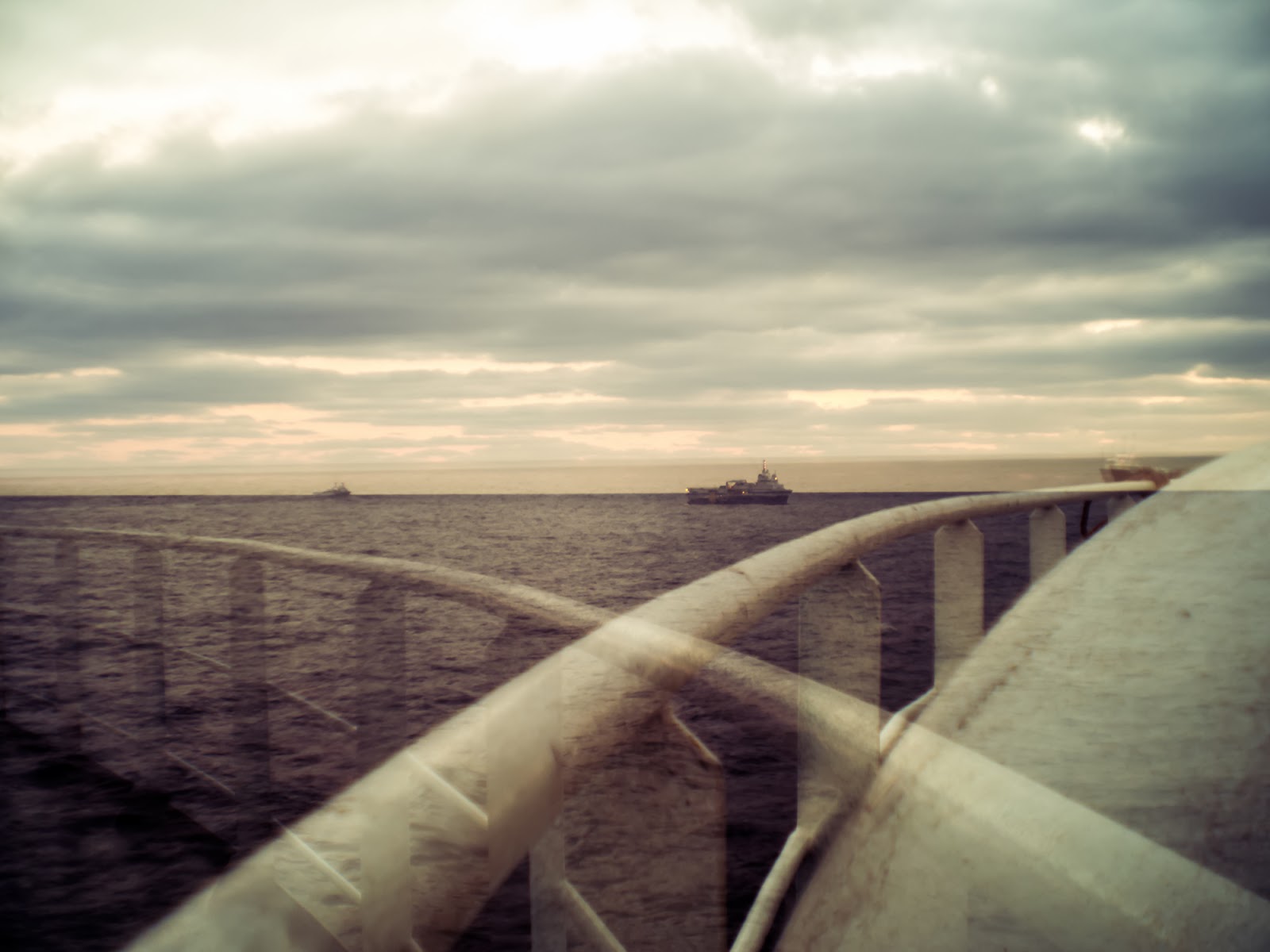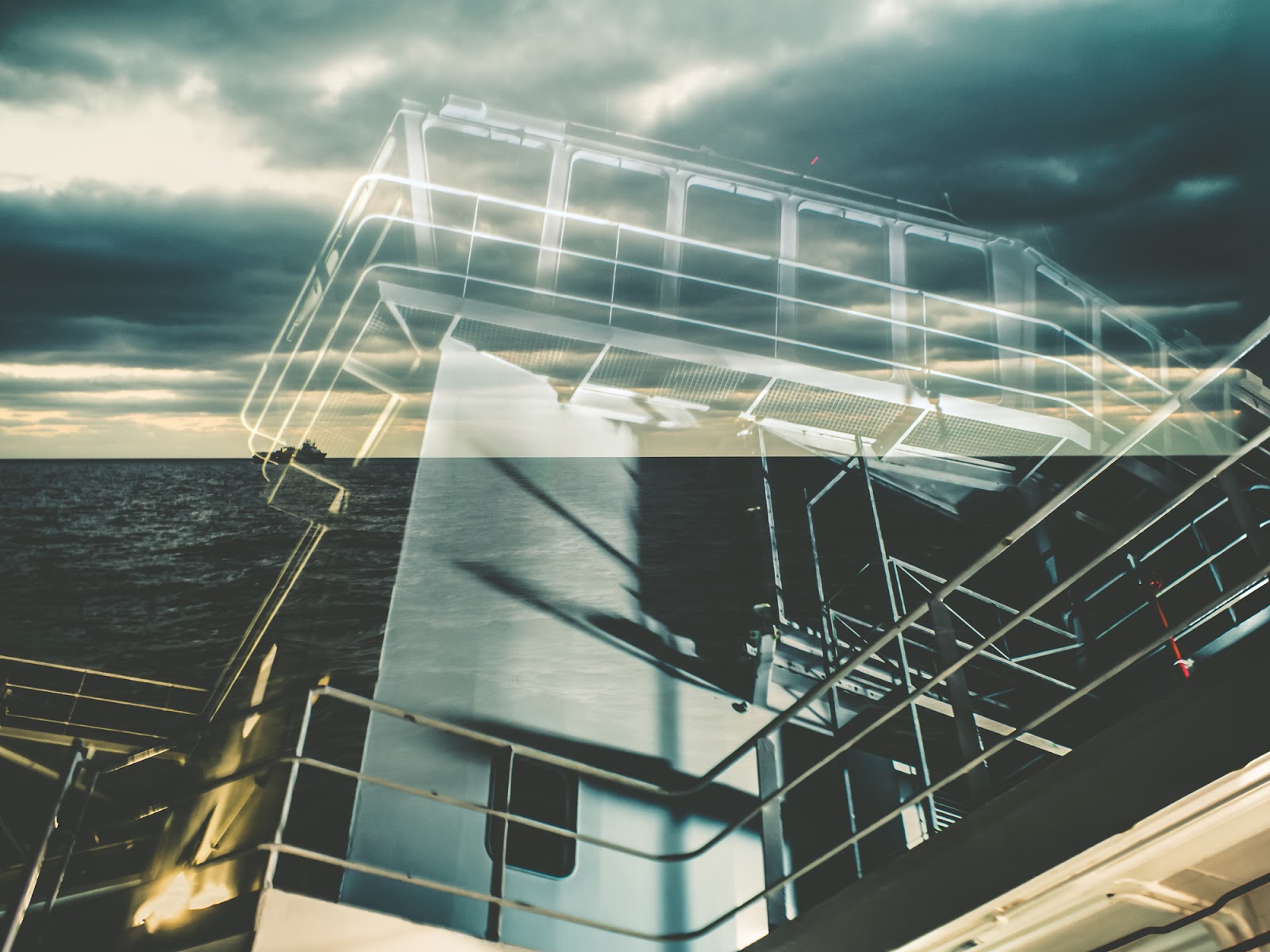 |
|
This post is all about describing some of the methods I have used to experiment with multiple exposure photography. By definition this is a technique where two or more images are combined or superimposed onto one another. This can be done digitally using post production software or by manually opening and closing your shutter several times to expose your film plane (if shooting analogue) or digital sensor multiple times. HDR photography by definition would be considered a type of multiple exposure photography where you combine many photographs with different exposure levels to obtain one with an increased overall dynamic range. Another type of multiple exposure photography would be star trails, but here you stack a ton of photos (at the same exposure level) to trace the Earth's movement using the stars. What I will focus on in this post is the more abstract type of multiple exposure photography where two seemingly unrelated photos are stacked on top of each other. As with most things, this is not going to be every one's cup of tea, but that's OK... I have seen the work of visionary people out there who have the creativity to pull off amazing work using multiple exposures. If your ultimate goal is to preserve the fidelity of photos you take, you may want to stop reading now.
Lomography Experimental Lens Kit
One of my best friends and I got scheduled to work offshore together and because he is awesome, brought me a
Lomography Experimental Lens Kit!!!! We had talked about how awesome it looked but I had no idea how much fun I would have using the double exposure feature. After a long bout of trial and error and finally resorting to the instructions, I figured out how everything worked and began shooting. During my "test shot phase" I was still a bit confused and there was a very steep learning curve. Luckily after spending some time with the setup something clicked and I began to grasp the theory behind multiple exposure photography as well as understand what LOMO was trying to accomplish.
 |
|
The kit comes with a normal (24mm), wide angle (12mm), and fisheye (160 degree FOV) lens and each has a built in shutter which allows you to take multiple exposures "in camera". In addition it come with a set of small filters which you place in a slot behind each lens. I quickly found out that the ND filters are necessary when using the lenses for double exposures during the day.
Basically the way you shoot double exposures here is to set your camera to bulb mode and trigger the built in shutter as many times as you desire depending on how much overlap of material you want. The EM5's Live Time/Live Bulb modes are very useful here because you get a preview of the exposure as it is happening. I stuck to the Live Time mode where you press the shutter button to start the exposure and then press it again to stop it. If you use Live Bulb then you will have to keep the shutter button pressed which inhibits your ability to use the on lens shutter button on the LOMO lenses.
One tip I can leave you with is to have the internal shutter in the "N" position when you are concerned about excessive blur. In the "N" position each time you trigger the shutter it equates to a speed of 1/100 seconds. In the "B" position the shutter will stay open until you release the lever. I've gotten better results using the "N" mode over the "B" mode even if it takes upwards of 4-5 "clicks" for the first part of the photo and another set for the second. In other words, five 1/100 sec exposures for your first frame and another five 1/100 sec exposures for your second frame will give you sharper images than a one second exposure per frame using the "B" mode. The photo below was shot in using this method... After crudely stabilizing my camera on some stairs I captured the railing and sunset using three 1/100sec exposures then moved to shoot the front of the vessel using two additional 1/100 sec exposures.
 |
|
These plastic lenses are not the best when it comes to image quality, but what they lack in sharpness, they definitely make up for in their ability to inspire you. I wanted to do a full on review of the kit, but there are some awesome ones out there and decided to just provide some sample shots below without spending too much time on the specifics of each lens. If you are interested in the E.L.K. check out these other reviews by
The Phoblographer,
Mirror Lessons,
ePhotozine, and
Dirk Essl. All these links will give you a more in depth look at the kit with tons of sample photos to get your creative juices flowing.
 |
|
 |
|
 |
|
 |
|
 |
|
 |
|
I am sure there is a way to do all this in Photoshop, but I use Lightroom as my primary photo editor and it is nice that Enfuse literally takes seconds to run. I highly recommend giving this plugin a shot especially if you are interested in HDR or creating a more non-conventional type of multiple exposure photograph. The download link can be found
here and for a small donation you can unlock the full version of the plugin.
2nd Curtain Flash
 |
|
While doing some research on strobism, I came across an article describing 2nd curtain flash. As per usual, it took me a long minute to finally understand how this worked, but when the theory sunk in I realized what an awesome tool this could be. Essentially 2nd curtain flash sets your camera to fire the flash right before the shutter closes when taking a photo. If your shutter is set to a very fast speed (say 1/2000 seconds) then you will not be able to tell the difference between this type of photo and one taken with a regular fill or manual flash output. As the shutter speed decreases however (say 1/10-60 seconds), you begin to capture two exposures in one photograph. The first exposure occurs during the time your shutter is open and the ambient light is recorded on your sensor. The second occurs when the flash fires right before the shuter closes. For exampe, in the photo above, I set my EM5 to Live Time mode, secured my camera to the ships wall and began the exposure by pressing the shutter button. During this time I was standing (barely) outside the fisheye's field of view and only exposed for the ship/background. After about 41 seconds I quickly stepped in front of the camera and pressed the shutter again. This fired the flash, lit me, and ended the exposure immediately afterwards. This is probably the most complicated method out of the three, and I was really surprised at the resultant photo.
Conclusions
First off, I need to thank Greggo for gifting me the Lomography E.L.K.!!! It opened up a whole new field of photography for me and I am sure he will do wonders with it as well. Even before either of us were interested in writing with light his creativity always amazed me. You should
check out his work on Flickr =) As for multiple exposure photography using the ELK... I think there is A LOT of trial and error involved and I would say my "success rate" is probably 5-10% so far. I think the biggest thing here is to practice a whole bunch and be careful to not photograph a lot of busy subjects. When I did this the resultant photos were cluttered and it was hard to pinpoint what the subject was supposed to be. You can use Enfuse to achieve results that mirror the E.L.K, but it is most definitely not as fun as actually accomplishing a double exposure in camera. The plug in is great though and I have spent a lot of time in Lightroom the past couple of days superimposing images onto one another. 2nd curtain flash is something that I will practice more of when I get home. It is hard to accomplish anything using this method offshore because I have no speedlight, no tripod and if I am taking photos at night am usually alone. I have been thinking of a million ways to apply this technique however, and can't wait to apply it to my photography once I get on shore. I hope that you enjoyed at least a few of these photo and as always, welcome critiques and thoughts on what you see here.
Sam D.
If you live in, or are traveling to Florida and would like to schedule a photo-shoot, I am currently offering portrait services in and around Central Fl. Check out more of my work at www.samgoldphotography.com















































As someone who dabbles in photography and videography, I find it fascinating how similar principles carry over, especially when layering visuals to tell a story. It makes me want to try incorporating these ideas into my next project. If only I could perfect timing and lighting as easily! Even as a videographer in Adelaide, I can see how these techniques could inspire creative storytelling in motion too.
ReplyDelete